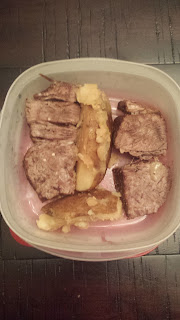Hi everyone! In my previous post, I broke down aperture, shutter and ISO settings so that proper exposure can be easier to attain. In this blog post, I will be talking about some steps that are necessary for amazing wildlife photographs.
In The Magic of Digital Nature Photography by Rob Sheppard, there are some ideas for where you will most likely encounter some sort of wildlife. Sheppard states that Parks and Zoos are helpful for beginners for getting good shots, because "many wild birds coexist with people at a certain locations and become acclimated to that contact" (Sheppard, 137). National Parks also have wildlife which are accustomed to crowds, because "these animals know they are safe, graze, go through mating calls, and other behavior not far from the main roads" (Sheppard, 137). Here, it's especially important to treat the animals with respect and know where it is safe to take photographs. If you don't want to go outside for very long, "set up a bird feeder outside of your home to meet and photograph the resident and small mammals of your area. You can place feeders near windows so you can photograph from inside" (Sheppard, 137). Nature centers are also good places to go because they have blinds, boardwalks, trails, and more for taking photographs.
Within the places listed in the previous paragraph, you can look for food, water, edges, regular paths and perches. Where there is food, you may be able to find some animals feeding, or if you wait a little, then you may find an animal approaching the food to eat. "In areas where water is scarce, a water hole is an animal magnet" (Sheppard, 138). Even in water abundant places, animals most likely be by the water source. Scientists have seen that most wildlife is found along the edges of habitats, because they use edges for movement, safety and feeding, Animals are also habitual, so they take the same paths over and over again. If you follow animals on a certain path at a certain time of day, then you can most likely encounter them in the same place at the same time the next day. The same concept applies to birds and perches. Birds visit and use the same perches over and over again, similarly to animals using the same paths.
It's important to know the behavior of your subject when you are taking photographs of wildlife, because within context of certain factors, each animal behaves a certain way. Animals have an "invisible circle of attention around them. If you are outside of that circle, they are relaxed and go about their normal business. If you get near that circle ... they become more alert and stop doing whatever they were doing" (Sheppard, 140). Animals also use their best senses differently to stay alert for danger. A mammal has poor eyesight, but have amazing hearing and smell, so they pay attention to different sounds and smells. Birds have amazing eyesight, so they are more visually aware of their surroundings.
When taking the photograph, it's important to know how to approach the animal, so it's best to know some stalking techniques. Make sure to be prepared by having the appropriate lens, proper focal length, etc. so that you can instantly take the photograph when you are in position to take a photograph. It's best to move slowly without sudden movements. "Your movement needs to be like that of a non-predatory animal, like a deer or a cow" (Sheppard, 142). Also, predators move in a straight line, so when you are approaching the animal, don't move in a straight line. Don't stare at your subject or point your lens directly toward the animal, because only a predator will do so. Observe the animal's attention as you are moving towards it, because if it looks down or away, you can move closer and quickly. Watching your silhouette is also important because the human silhouette is easily recognizable. Blending into the surroundings will help. Since all animals are sensitive to sound, it's best to keep noise to a minimum.


These pictures were taken at Coulon, a lake near The Landing. Here, the most prevalent animals are birds. Knowing that birds are more visually aware, it was important that I didn't point my lense to the bird, or that I stared at it. In the first photograph, the bird was aware that I had already been taking photos of it, so I had to lower my lens to not seem like a predator. In the second photograph, the bird looked forward, so it was easier to get closer to it and take photographs of it. The part that made taking these photographs easier was that this bird, and many others living at Coulon, are already accustomed to human activity in their habitat.
Overall, what wildlife subject has been easiest for you to take? What has made it the easiest?
Bibliography: Sheppard, Rob. The Magic of Digital Nature Photography. New York: Lark, 2007. Print.





























